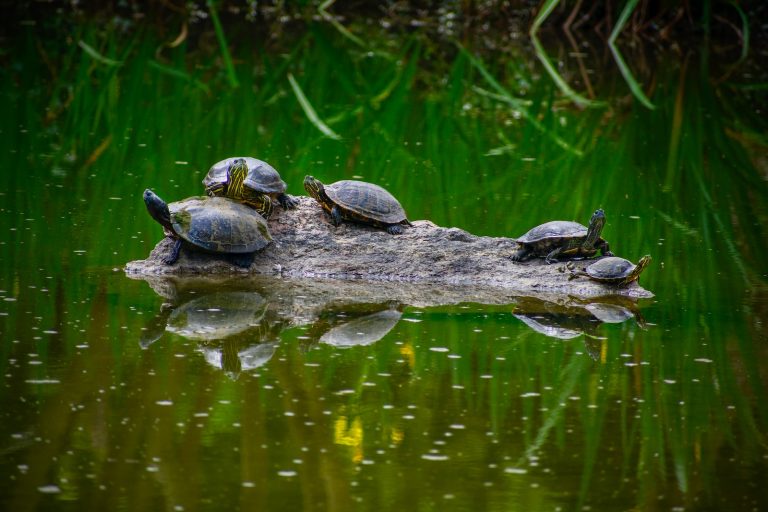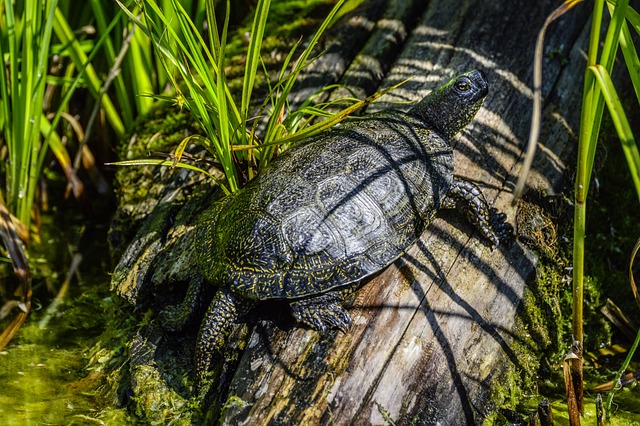Are you curious about the captivating world of box turtles in Arkansas? These remarkable creatures have been inhabitants of Arkansas’s lush landscapes for centuries, captivating both locals and wildlife enthusiasts alike. In this comprehensive guide, we delve deep into the world of box turtles in Arkansas, shedding light on their habitat, behavior, conservation, and everything you need to know about these native terrapins.

Box Turtles in Arkansas: An Introduction
Arkansas, with its diverse ecosystems and rich natural beauty, provides the perfect habitat for several species of box turtles. These land-dwelling reptiles belong to the genus Terrapene, and they are known for their distinctive hinged shells that allow them to retract and protect their limbs. In Arkansas, you’ll find three species of box turtles: the Eastern Box Turtle (Terrapene carolina carolina), the Three-toed Box Turtle (Terrapene carolina triunguis), and the Gulf Coast Box Turtle (Terrapene carolina major).
Box Turtles in Arkansas: Habitat and Distribution
Box turtles in Arkansas thrive in a variety of habitats, from deciduous forests and grasslands to wetlands and meadows. These adaptable reptiles are often found near water sources such as ponds, streams, and marshes. Their range spans across the state, and they can be encountered in various counties, including Pulaski, Benton, Washington, and Sebastian.

The Life of a Box Turtle: Behavior and Habits
Behavioral Traits and Diet
Box turtles in Arkansas are primarily active during the day, and their behavior varies with the changing seasons. During cooler months, they hibernate, often burrowing into the ground to avoid extreme temperatures. In warmer months, they emerge to forage for food. Their diet consists of a wide array of foods, including insects, worms, snails, mushrooms, berries, and even small vertebrates.
Movement and Home Range
These turtles are known for their slow and deliberate movement. They have a relatively small home range, usually around a few acres, within which they establish territories and find their preferred food sources. Their strong homing instinct often leads them to return to the same favored locations.
Life Span and Reproduction
Box turtles in Arkansas have a relatively long life span, often living for several decades. They reach sexual maturity between 7 and 10 years of age. Female box turtles lay eggs in well-drained soil during the nesting season, which typically falls in late spring to early summer. The incubation period lasts for about 2 to 3 months, and the hatchlings emerge to start their journey.
Conservation Efforts: Protecting Arkansas’s Native Terrapins
Arkansas recognizes the importance of preserving its diverse wildlife, including box turtles. Due to habitat loss, road mortality, and the illegal pet trade, these turtles face various challenges. To ensure their survival, several conservation efforts have been initiated:
- Habitat Preservation: Protecting natural habitats is crucial for box turtle conservation. Efforts to maintain and restore ecosystems aid in providing suitable homes for these reptiles.
- Road Crossings: Constructing turtle-friendly crossings near roads and highways helps reduce the number of turtles killed by vehicles.
- Education and Awareness: Raising awareness about the significance of box turtles in Arkansas’s ecosystem encourages responsible interactions and conservation support from local communities.
- Research and Monitoring: Ongoing research projects aim to gather data on box turtle populations, behavior, and health to implement effective conservation strategies.
Frequently Asked Questions about Box Turtles in Arkansas
Q: How can I help protect box turtles in Arkansas? A: You can contribute by avoiding the capture and sale of wild turtles, protecting their habitats, and assisting them safely across roads.
Q: What should I do if I find a box turtle crossing the road? A: If it’s safe to do so, gently pick up the turtle and guide it in the direction it was headed. Ensure its safety and avoid causing stress.
Q: Are box turtles good pets? A: While they may seem like interesting pets, box turtles have complex care requirements and are best left in their natural habitats to support local ecosystems.
Q: How can I identify the different species of box turtles in Arkansas? A: Each species has distinct characteristics, including shell shape, coloration, and markings. Field guides and online resources can help you learn to differentiate them.
Q: Can I release a captive box turtle into the wild? A: Releasing captive box turtles into the wild can introduce diseases and disrupt local ecosystems. If you encounter a turtle you believe was once a pet, contact wildlife rehabilitators for guidance.
Q: What should I do if I find a injured box turtle? A: Contact local wildlife rehabilitators or animal rescue organizations for assistance. They have the expertise to provide proper care and rehabilitation.
Conclusion: Celebrating Arkansas’s Native Terrapins
As you explore the diverse landscapes of Arkansas, keep an eye out for the enchanting box turtles that call this state home. These captivating reptiles are a testament to the rich biodiversity that Arkansas offers. By understanding their habitat, behavior, and the challenges they face, we can all contribute to the conservation efforts that ensure the survival of box turtles in Arkansas for generations to come.






